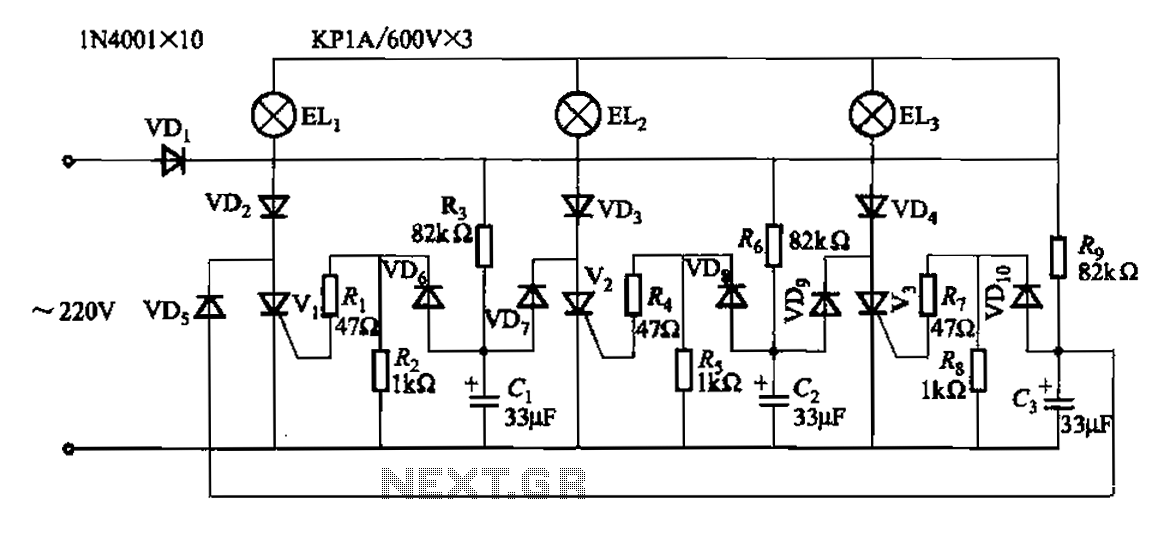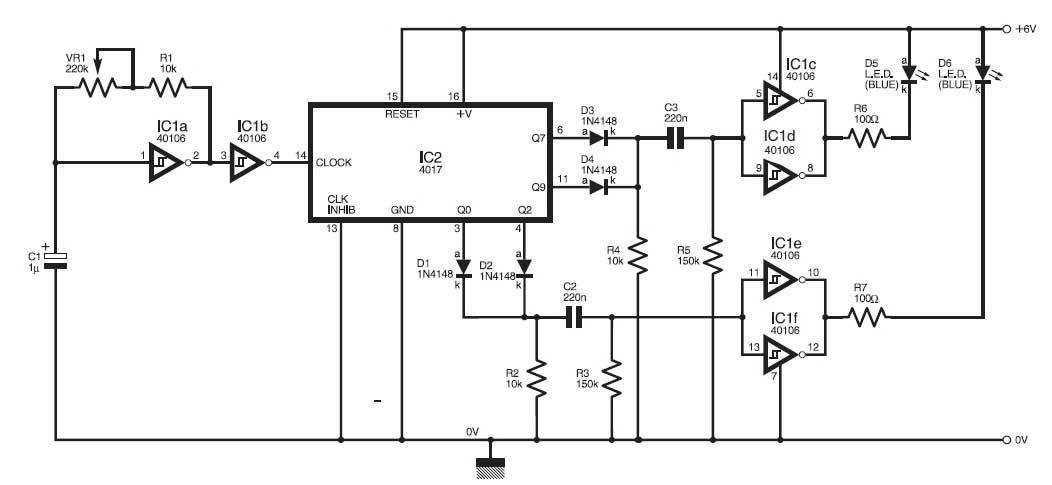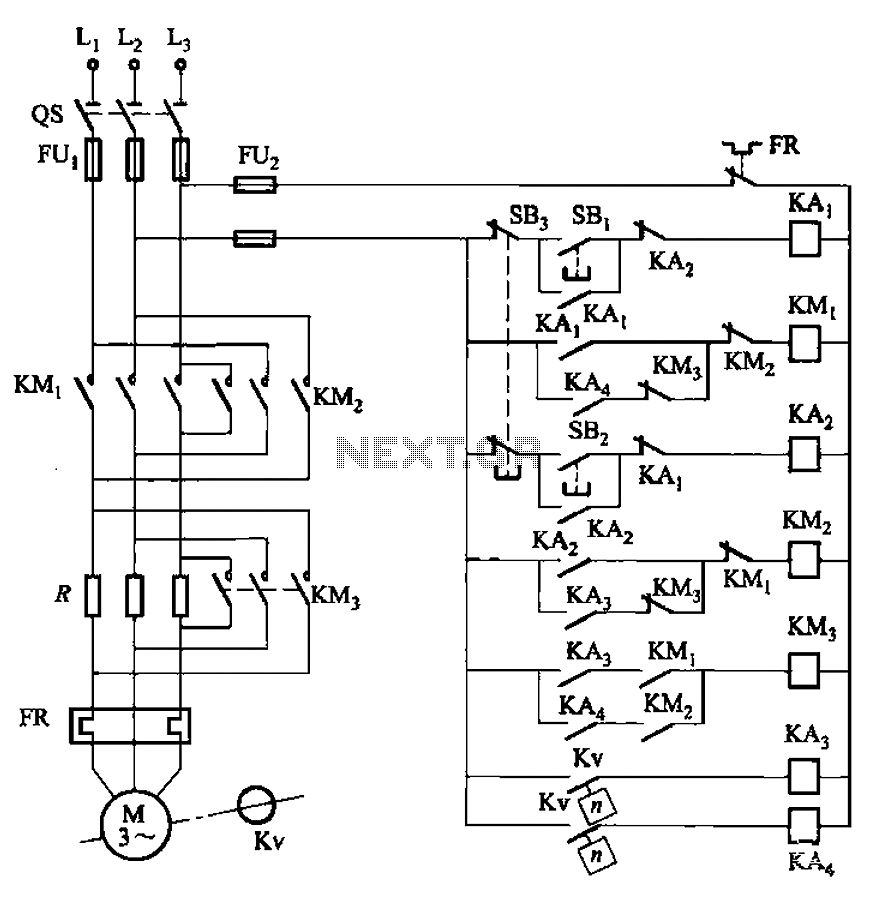
A plurality of sets of three loop flashing lights chain circuits

The circuit operates with a 220V mains supply through a diode (VDi) configured as a half-wave rectifier. Capacitors C1 to C3 are charged, and due to the lack of full synchronization in the charging process, a pilot thyristor is required to control the lighting of a lantern. This setup allows for three sets of lights (EL1 to EL3) to alternate between being illuminated and extinguished.
The described circuit utilizes a half-wave rectifier configuration, where the diode (VDi) allows current to flow only during one half of the AC cycle, effectively converting the AC voltage to a pulsating DC voltage. This rectified output is then used to charge capacitors C1, C2, and C3. These capacitors serve as energy storage elements, smoothing the output voltage to some extent but not completely eliminating the ripple due to the nature of half-wave rectification.
The pilot thyristor plays a crucial role in managing the illumination of the lantern. When the voltage across the capacitors reaches a certain threshold, the thyristor is triggered, allowing current to flow through the lantern, thus illuminating it. The thyristor remains conductive until the current flowing through it falls below a certain level, at which point it turns off, allowing the lantern to extinguish. This on-off switching creates a visual effect where the three sets of lights (EL1, EL2, and EL3) alternate in brightness.
The alternating illumination of the lights can be achieved by connecting each light set to a different timing circuit or by employing a control mechanism that sequentially triggers the thyristor at specific intervals. This creates a visually appealing effect, often used in decorative lighting applications. Proper component selection, including the ratings of the diode, capacitors, and thyristor, is essential to ensure the reliability and safety of the circuit when operating at mains voltage. Additionally, consideration should be given to the thermal management of the components, especially the thyristor, due to the potential for heat generation during operation.220V mains via diode VDi half-wave rectifier, the capacitor Cl-C3 charge, since the charge is not fully synchronized, so there must be a pilot thyristor through, lit lantern in the group, so three sets of lights ELi ~ EL3 rotation point bright and extinguished.
The described circuit utilizes a half-wave rectifier configuration, where the diode (VDi) allows current to flow only during one half of the AC cycle, effectively converting the AC voltage to a pulsating DC voltage. This rectified output is then used to charge capacitors C1, C2, and C3. These capacitors serve as energy storage elements, smoothing the output voltage to some extent but not completely eliminating the ripple due to the nature of half-wave rectification.
The pilot thyristor plays a crucial role in managing the illumination of the lantern. When the voltage across the capacitors reaches a certain threshold, the thyristor is triggered, allowing current to flow through the lantern, thus illuminating it. The thyristor remains conductive until the current flowing through it falls below a certain level, at which point it turns off, allowing the lantern to extinguish. This on-off switching creates a visual effect where the three sets of lights (EL1, EL2, and EL3) alternate in brightness.
The alternating illumination of the lights can be achieved by connecting each light set to a different timing circuit or by employing a control mechanism that sequentially triggers the thyristor at specific intervals. This creates a visually appealing effect, often used in decorative lighting applications. Proper component selection, including the ratings of the diode, capacitors, and thyristor, is essential to ensure the reliability and safety of the circuit when operating at mains voltage. Additionally, consideration should be given to the thermal management of the components, especially the thyristor, due to the potential for heat generation during operation.220V mains via diode VDi half-wave rectifier, the capacitor Cl-C3 charge, since the charge is not fully synchronized, so there must be a pilot thyristor through, lit lantern in the group, so three sets of lights ELi ~ EL3 rotation point bright and extinguished.





